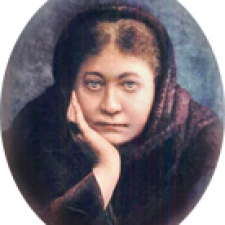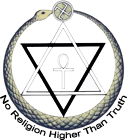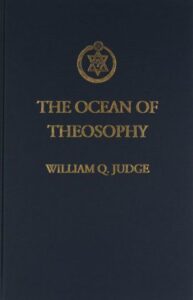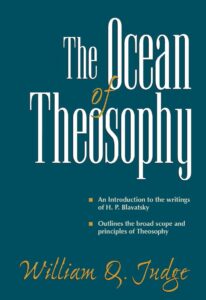Studies In The Ocean of Theosophy Part XV
Theosophy Magazine
Vol. 22, No. 3 January 1934
pages 126-130
MODERN Christianity has much to explain away in its early history, with its records showing that Reincarnation was then “known and taught, and the very best of the fathers of the church believed and promulgated it.” There is no point to argumentation about the absence of the term from Christ’s sayings, even were the Bible free from tamperings; for re-embodiment was too well established among the Jews, to whom Jesus gave his mission, to necessitate its expounding. Where the perspective is not narrowed down to one earthly existence, as it is today in the West, there is no more need to explain pre-existence and reincarnation than there is to persuade men that they lived yesterday and will waken from sleep tomorrow. Just as Patanjali’s aphorisms are based on the fact of repeated lives on earth, so, the statements of Jesus also take it for granted. “Indeed, the theosophist holds that whenever a professed Christian denies the theory he thereby sets up his judgment against that of Jesus, who must have known more about the matter than those who follow him.”
Many statements, in both Testaments, meaningless from a one-life standpoint, become quite otherwise when Theosophically considered. These planks from the foundations of pure philosophy, escaping despoilment by priestcraft and political cunning, have floated down the stream of time to contribute additional evidence of the indestructibility of truth. They should help to convince the sceptic that the doctrine of Man’s immortality and repeated embodiments here is neither a new theory, nor an ancient superstition, but the immemorial story of the deathless Soul.
Ethics are the same in all teachings worthy of the name, persisting down the ages; yet, without Reincarnation they are devoid of any sound basis. “For alone in reincarnation is the answer to all the problems of life, and in it and Karma is the force that will make men pursue in fact the ethics they have in theory. It is the aim of the old philosophy to restore this doctrine to whatsoever religion has lost it; and hence we call it the ‘lost chord of Christianity.'” The hypocrisy resulting from the “anathema hurled by the church council and the absence of the doctrine from the teaching” is the disgrace of all Christian nations, “who pretend to be followers of Jesus and the law of love”, but do, in fact, adhere to “the Mosaic law of retaliation.”
Religion is not the sole opponent of Theosophy. Science has contributed much, in concealment of evidence needed to break down prejudice, especially as regards the time element. Mr. Judge signifies the importance of this in his statement that Reincarnation will no doubt “one day be admitted by everyone when the mind of the western race has broken away from Mosaic chronology and Mosaic ideas of man and nature.” The prevailing fear of modern men “to believe the truth about themselves” is the evil result of Religion’s belittlement of Humanity. Science, to be sure, has shaken off religious domination, but still retains some of this same old fear, as evidenced in her hesitancy to extend her perspective and to place Man in his true position in the scheme of things — so “logical and vast”! Science has played petty tyrant, in her own turn, authoritatively setting “limit-markers” in time and space for the layman. In these days, it is interesting to note with what spectacular speed these limit-markers are being set back by discoveries permitting of no covering, just as H.P.B. said would occur. These sign-posts along Truth’s triumphal way announce that the time has come to discard the puerile “Mosaic ideas of man and nature” and embrace the idealism, hope, and responsibility offered in the teaching of Reincarnation.
Obscuration of this great process of evolution sweeps away all reason for living at all. The unsatisfied longings of a single lifetime would render our life an imposition in Nature and reduce its best accomplishments to dead-sea fruit. Where a one-existence theory is held, hope, courage and will to endure can be explained only by the presence of an inner knowledge, offsetting outer ignorance. The voice of fairer tomorrows somehow finds intonation, even in the hearts of those crediting but one day in the school of Life. Did not some such deeper understanding have residence there, unbelieving mankind could not proceed with its journey. Indeed, it is common testimony of those finally convinced of this truth, that they had inwardly known it, always.
Conviction is the first step; but the doctrine can become a working philosophy only after current conceptions of selfhood are corrected. This is approached by seriously undertaking to break the identification with the personal nature. In furtherance of this, the reasoning faculty may be employed with profit to push onward from the known to the unknown. For instance, the fruit of experience could not be carried from life to life unless retained in a focus of consciousness. So, reincarnation must be by a unit, not a compound; for compounds break up and their constituent elements scatter. So, we perceive that the physical body can not take new birth, nor does the astral form — both die and disintegrate. Similarly, it is not the passions and desires, albeit these “have the power to reproduce themselves in each life so long as we do not eradicate them.”
With death, the various combinations making up the personal being dissolve, and all departments of it are left behind. Only that goes on which is beyond and above these; and only that which goes on can come back again. Although a unit, the reincarnating Man, Atman, has two aspects — Buddhi and Manas —inseparable from It or from each other. Freed from mortal existence, this Triad goes immediately “into another state, and when that state, which is called Devachan, or heaven, is over, they are attracted back to earth for incarnation.” Only that assimilable to Buddhi-Manas is taken to this other state; only upon return to physical life is the dross of past existences cognized. Nevertheless, it has been awaiting its owner’s return, no matter how long he may have tarried. It is his excess baggage, the payments on which often seem so heavy, yet are not; for Nature knows no extortion. Theosophy, showing that the “three in one” are “no other are we,” gives strength and wisdom to cope with the lower, transient nature and bend it to the purposes of Soul, according to the degree of its realization.
What “the real man” is must needs be “firmly grasped”; for “upon its clear understanding, depends the comprehension of the entire doctrine” and the practical bearing of Reincarnation upon daily living. Our daily activity, broken by the interim of sleep, faithfully pictures the greater cycle of life, death, and re-birth. And just as earthly struggle is relieved by the nightly break in its routine; so, if the correspondence be grasped, the struggle of life should seem less formidable, when death is regarded as but a period of respite from the labors of existence. Rest and refreshment from sleep bring courage for a new day; rest and refreshment from death bring courage for a new lifetime. Compare such an idea with the gruesome dogma of physical resurrection, “against common sense, fact, logic, and testimony”, yet really but a distortion of the Ego’s periodic awakening in new flesh. Had not men come to think they were bodies, it could never have found credence. All who have shuddered at this horror of being chained again to their old, discarded bodies, “admitted to be infected with disease” and generally inadequate, should find a morning joy in the thought of the true Egoic resurrection to a fresh cycle of accomplishment.
Even in the East, where the term, Reincarnation, is common, and where the doctrine has never faded away, there are still misconceptions almost as appalling as the notion of a physical resurrection. These, like the latter, are corruptions of the true. Certain “laws of Manu”, there, have been misconstrued to mean that “we go into animal forms after death”. But the Great Lodge answers: “Once a man always a man”. “Manas, the Thinker and Immortal Person” goes not “back to the brute which has not Manas.” Even the most brutal man may not be “brute all through his nature”. And, in any case, he would be aware of his brutality; while the brute is not. Nature’s law forbids Man to unknow what he knows.
Yet, even in its perversions the true Doctrine lives on. East or West, all counterfeits spring up from materialism. This stands as both cause and effect in vicious cycle, because preventing the incarnation of “the complete trinity” and itself being due to this lack. But when complete incarnation shall have “been accomplished the race will have become as gods, and the godlike trinity being in full possession the entire mass of matter will be perfected and raised up for the next step.” Then, physical existence will no longer be as “hell” to the Heavenly Man, which each human being really is, inwardly. Now, mystified and sorrowful in his incomplete incarnation. Mankind is known to the Teachers as the “Great Orphan”, for whose true birth They live and labor in the world of sinful men.
COMPILER’S NOTE: The following is a separate item which followed the above article but was on the same page. I felt it was useful to include it here:
THE TRUE PATH
The true Theosophist is a philanthropist — “not for himself but for the world he lives!” This, and philosophy, the right comprehension of life and its mysteries, will give the “necessary basis” and show the right path to pursue. —From A Master’s Letter.
Back to Ocean of Theosophy



